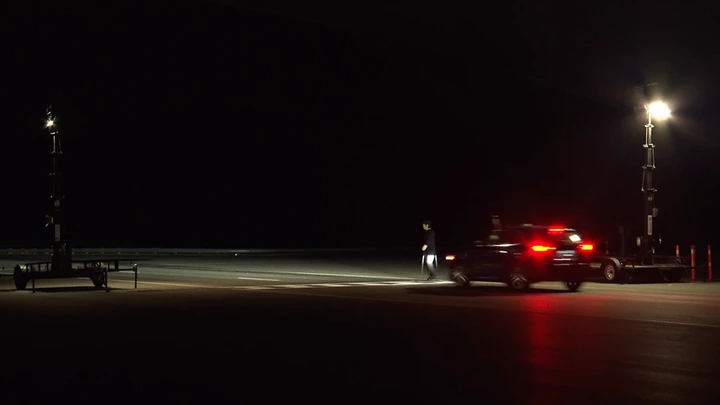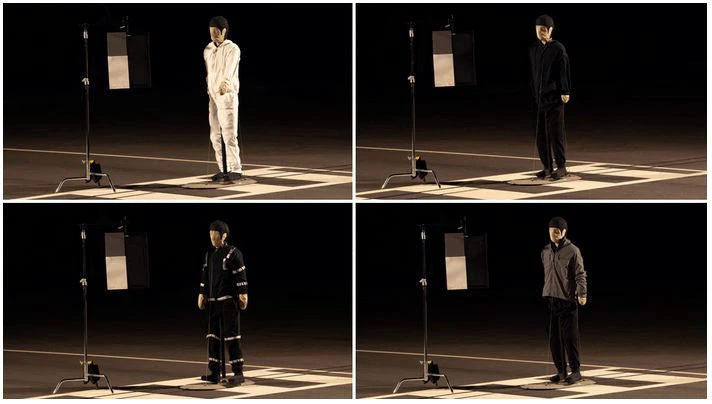Donning a "high-visibility" jacket during nighttime could potentially mislead the sensors employed by automated driving assistance technologies.

View pictures in App save up to 80% data.
The reflective, “high-visibility” safety vests worn by road workers and first responders, not to mention joggers and dog walkers, may do absolutely nothing to protect their wearers from automated driving systems, the Insurance Institute for Highway Safety said in a report released this week. These systems are already known to struggle in low light, and now IIHS says that the reflective strips on these vests, which are vital for nighttime visibility, seem to be virtually invisible to at least some automated safety systems. And that’s a problem, because most pedestrian fatalities happen at night.
IIHS tested the performance of three different driver aid suites: Honda, using a CR-V; Mazda, using a CX-5; and Subaru, using a Forester. The Institute mocked up a crosswalk and outfitted a dummy in four different outfits: two with reflectors (one made of reflective material, the other fitted with patches), and the other two unadorned—one white and one black. The dummies were then sent into the crosswalk at three levels of outside illumination (dark, twilight, and 20 lux—the requirement for lighting crosswalks) to see whether the onboard pedestrian safety systems would detect them at 25 mph. While the results varied from test to test, the Honda CR-V and Mazda CX-5 starkly demonstrated the potential severity of these systems’ limitations.

View pictures in App save up to 80% data.
In the tests conducted without reflectors, the black dummy unsurprisingly performed the poorest. When using only their low beams, both the Honda and Mazda faced difficulties; the Mazda reduced its speed by approximately one-third, whereas the Honda collided with the dummy without decelerating. However, when the high beams were activated, both cars were able to detect the dummy and significantly reduced their speed. When the lighting was increased to the legal standard for pedestrian crossings (20 lux), the performance of both the Honda and Mazda improved notably, according to IIHS.
The white dummy also remained unseen by the Honda in the absence of extra external lighting, but its visibility greatly enhanced with 10 lux (twilight) or 20 lux of light. The CX-5 showed improved performance when the dummy was clad in white. However, once reflectors were involved, the situation took a turn for the worse.
According to the IIHS, “The CR-V maintained its speed throughout all trials when the dummy was outfitted in the reflective jacket, showing no signs of slowing down, even with extra roadway lighting present. On the other hand, the CX-5 exhibited a significant reduction in speed when there was no roadway lighting and only 10 lux of additional light, compared to when the dummy was dressed in black. However, when the illumination increased to 20 lux, the CX-5's performance deteriorated with the dummy in the reflective jacket compared to when it was wearing the black attire.”

View pictures in App save up to 80% data.
By now, you might be curious about what transpired with the Forester. The reason for this intrigue is that the Subaru was occupied with excelling in nearly all of its evaluations.
According to the IIHS summary, the CR-V and CX-5 struck the dummy in 84% and 88% of their test runs, respectively, whereas the Forester successfully avoided a collision in all but one trial. It was also noted that neither the CR-V nor the CX-5 reduced speed when the dummy was dressed in clothing with reflective strips that highlighted its limbs.
“The summary went on to state, “Unlike the other two vehicles, the Subaru managed to stop completely without colliding with the pedestrian dummy in all but one instance. That exception occurred when the dummy was dressed in reflective clothing and the road was lit to a brightness of 10 lux. Nonetheless, it still reduced its speed by over 80% during that test.”
Even Subaru's Eyesight system, which typically performs well, can occasionally struggle with reflective surfaces. Why is this the case? According to IIHS President David Harkey, it creates a "concerning blind spot."
The IIHS stated, "The reason behind the difficulties faced by the Honda and Mazda systems with the reflective strips remains uncertain, as does the number of other systems that may encounter challenges in detecting pedestrians dressed in this kind of apparel."
Our conclusion: Whether you have reflectors or not, make sure to wear bright clothing when walking at night. It could potentially save your life.
Got a tip? Send it in: [email protected]